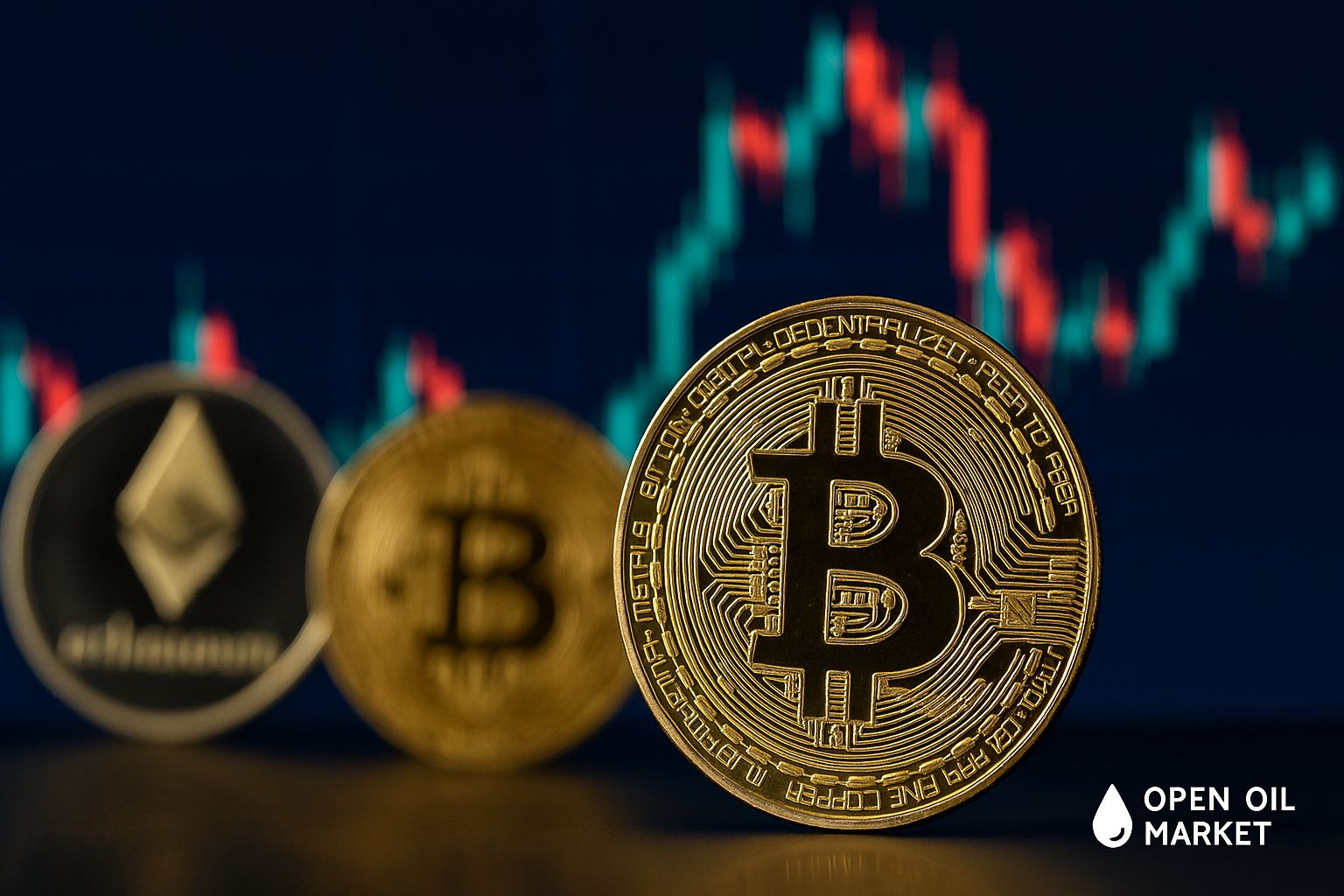
Startup and Venture Investment News — Monday, November 24, 2025: Record AI Rounds, the Return of Mega Funds, IPO Market Rejuvenation, M&A Consolidation, Global Expansion of the Venture Market, Renaissance of Crypto Startups, and a Wave of New “Unicorns”
By the end of November 2025, the global venture capital market is showing resilient growth following a period of decline. Investors worldwide are once again actively investing in technology startups: record deals are being struck, companies are re-evaluating their IPO exit strategies, and the largest funds are triumphantly returning to the market with significant investments. Governments in various countries are ramping up support for innovation and stimulating private capital attraction, which, along with a revival in stock markets, is propelling venture activity. As a result, substantial financial resources are flowing into the startup ecosystem, although investors remain cautious and selective, favoring startups with sustainable business models and proven economics.
Growth is being observed across nearly all regions. According to the latest data, in the third quarter of 2025, the global volume of venture investments amounted to approximately $97 billion — a 38% increase compared to the previous year, and slightly above the results of the previous quarter. This figure marks the highest quarterly volume since 2021 and represents the fourth consecutive quarter of growth following the "venture winter" of 2022–2023. The primary driver of this surge is mega rounds in the field of artificial intelligence (AI), although funding increases are noted at all stages. Venture activity is rising almost universally: the U.S. maintains a leading position (with the AI segment particularly booming), investment volumes in the Middle East have multiplied over the year, and Germany has surpassed the UK in aggregate venture funding for the first time in a decade. Asia displays uneven dynamics: India, Southeast Asia, and Gulf states are attracting record capital flows against the backdrop of a relative downturn in China. The startup scenes in Russia and the CIS countries are also striving to keep pace, with new funds and initiatives being launched to develop local ecosystems. A new global venture boom is forming, although market participants continue to act prudently and selectively.
Below are the key events and trends shaping the venture market landscape as of November 24, 2025:
- The return of mega funds and large investors. Leading venture players are forming record-sized funds and increasing investments, reinvigorating the market with capital and rekindling appetites for risk.
- Record investment rounds in AI and a new wave of “unicorns.” Unprecedented capital injections into AI startups are driving company valuations to unprecedented heights, leading to the emergence of a multitude of new unicorns.
- The revival of the IPO market. Successful public offerings by technology companies and new submission applications indicate that the long-awaited "window" for public placements has reopened.
- Diversification of sector focus. Venture capital is being directed not only to AI but also to fintech, biotech, climate technologies, space and defense projects, along with other sectors of the economy.
- A wave of consolidation and major M&A deals. Large mergers, acquisitions, and strategic partnerships are reshaping the industry landscape, creating new opportunities for exits and accelerated growth for startups.
- Global expansion of venture capital. The investment boom is reaching new regions — from the Middle East and South Asia to Africa and Latin America — forming their own technology clusters.
- A renaissance of interest in crypto startups. Following a prolonged "crypto winter," the blockchain project sector is reviving, once again attracting significant venture investments amid the growth of the crypto market.
- Local focus: Russia and CIS countries. New funds and initiatives are emerging in the region to support the development of local startup ecosystems, drawing investor interest despite geopolitical constraints.
The Return of Mega Funds: Big Money Back on the Market
The largest investment funds and institutional players are confidently making their return to the venture arena, signaling a renewed surge in risk appetite. Following a decline in VC fundraising during 2022–2024, leading firms are resuming capital attraction and announcing mega funds. Japanese conglomerate SoftBank, overcoming recent challenges, has announced the launch of its Vision Fund III, which is approximately $40 billion in size and focuses on advanced technologies (AI, robotics, etc.). In the U.S., venture firm Andreessen Horowitz plans a record fund of around $20 billion, betting on investments in late-stage AI startups. Simultaneously, sovereign funds from Gulf countries are significantly expanding their presence in the tech sector: Middle Eastern investors are pouring billions into promising startups worldwide and launching large-scale programs to develop their own tech hubs. Dozens of new venture funds are emerging across all key regions, attracting substantial institutional capital for investments in high-tech projects. This influx of "big money" is filling the market with liquidity and intensifying competition for the most promising deals, while simultaneously instilling confidence in the industry regarding the continued influx of capital.
Record Investments in AI and a New Wave of “Unicorns”
The artificial intelligence sector remains the principal driver of the current venture upswing, displaying unprecedented funding volumes. Since the beginning of 2025, AI startups have collectively raised over $160 billion just in the U.S. (about two-thirds of all venture investments in the country), and by the end of the year, global investments in AI companies are expected to exceed $200 billion — an unprecedented level for the industry. The combined valuation of the ten largest AI startups (including leaders such as OpenAI, Anthropic, xAI, and others) has approached an astronomical $1 trillion. The tremendous influx of capital into AI is accompanied by the emergence of numerous new unicorns. Just in October 2025, around 20 new startups with valuations above $1 billion emerged worldwide — marking a record monthly addition to the unicorn club in recent years. Investors are eager to support projects in generative AI, AI infrastructure, autonomous systems, and other advanced sectors. Moreover, new mega rounds of funding are being reported almost weekly: for instance, in November, the American company Lambda (cloud infrastructure for AI) raised about $1.5 billion, market prediction platform Kalshi raised $1 billion, while multimodal AI systems developer Luma AI closed a round at $900 million. Such scales of venture funding have not been seen since the peak of 2021. While this explosive growth inspires optimism regarding the potential of technologies, some experts have warned of signs of overheating in certain niches. This prompts investors to be more discerning in their evaluations and to select truly quality projects.
The IPO Market Awakens: A New Wave of Public Offerings
The global IPO market is beginning to emerge from a lengthy lull and is gaining momentum. After nearly two years of inactivity, the revival of IPOs as a desired exit mechanism for venture investors is becoming apparent. In Asia, Hong Kong has set the stage for a new wave of IPOs: in recent months, several large tech companies have gone public, collectively attracting billions of dollars in investments. For example, Chinese battery manufacturer CATL successfully conducted an IPO, raising approximately $5 billion and demonstrating that investors in the region are again ready to participate actively in IPOs. The situation in the U.S. and Europe is also improving: American fintech unicorn Chime recently debuted on the stock market, with shares rising about 30% on the first day of trading. Soon after, design platform Figma conducted an IPO, attracting around $1.2 billion at a valuation of about $20 billion; its shares also rose steadily in the initial days of trading. In the second half of 2025, other notable startups, including payment giant Stripe and other highly valued tech companies, are preparing for public market entry.
Even the crypto industry is striving to capitalize on the revival: fintech company Circle successfully went public last summer (its valuation at IPO was about $7 billion, and subsequently, shares rose significantly), while crypto exchange Bullish filed for listing in the U.S. with a target valuation of around $4 billion. The return of activity in the public offering market is crucial for the entire venture ecosystem: successful IPO exits allow funds to realize profits and direct the freed-up capital into new projects, supporting the continued growth of the industry.
Diversification of Investments: Beyond AI
In 2025, venture investments are encompassing a broader range of industries and are no longer limited to artificial intelligence alone. Following the downturn of previous years, adjacent sectors are reviving noticeably, making the startup ecosystem more balanced and reducing the risk of overheating in specific niches. Venture capital is confidently broadening its horizons, investing in a variety of directions:
- Fintech: Following a pause in 2022–2023, financial technologies are once again attracting significant funding rounds not only in the U.S. but also in Europe and emerging markets, fueling the growth of new digital services.
- Climate Technologies: Projects in clean energy, climate tech, and agri-tech are receiving record investments amid the global trend towards sustainability and decarbonization.
- Biotech and Healthcare: New developments in pharmaceuticals, genetics, and digital health are once again attracting capital as the valuations in the sector recover after recent declines.
- Defense and Space Projects: With heightened attention on security, investors are increasingly financing defense technologies and cybersecurity. Concurrently, interest in space startups is growing — from satellite services to projects aimed at space exploration.
The expansion of sector focus indicates the maturity of the venture market: investors are diversifying their portfolios, and funds are being directed into various innovative spheres, reducing the ecosystem's reliance on a single dominant direction.
A Wave of Consolidation and M&A: Larger Players Emerge
High valuations of startups and intense competition for markets are stimulating a new wave of consolidation. Major mergers and acquisitions are again coming to the forefront, reshaping the balance of power in the industry. Tech giants are eager to acquire key innovations and talents, actively pursuing acquisitions. A notable example is Google, which has agreed to acquire Israeli cybersecurity startup Wiz for approximately $32 billion, marking a record sum for the Israeli tech sector. Such mega-deals demonstrate corporations' willingness to invest in cutting-edge developments to strengthen their positions. Overall, current M&A activity and large venture deals indicate the market's maturation. Mature startups are either merging with one another or becoming targets for acquisitions by corporations, while venture funds are gaining the opportunity for long-awaited profitable exits. Consolidation accelerates the growth of the most promising companies while simultaneously "cleansing" the ecosystem of weaker players, making the market healthier.
Global Expansion of Venture Capital: New Technology Hubs
The investment boom is spreading to new geographic regions, forming unique centers for technological development worldwide. The Middle East stands out particularly: countries in the region (primarily the UAE and Saudi Arabia) are investing unprecedented funds in creating world-class local tech hubs. Over the past couple of years, venture investments in the Middle East have grown several times, leading to the emergence of new large funds and mega-projects (such as the futuristic technology megacity NEOM in Saudi Arabia). A strong influx of capital is also being observed in South Asia: India and Southeast Asian countries are setting new records for attracting venture investments, partly compensating for the relative cooling in the Chinese market. Simultaneously, the startup ecosystems in Africa and Latin America are gaining strength, where new technology clusters are being formed thanks to increasing funding. Thus, venture capital is becoming increasingly global: in addition to traditional centers like Silicon Valley, New York, or London, new growth points for startups are strengthening on the world map.
The Local Market: Russia and the CIS Countries
Despite external constraints, Russia and neighboring countries are witnessing a revival of startup activity in 2025. Over the past year, several new venture funds (with a total capital of around 10–15 billion rubles) have emerged, and state structures and corporations have launched programs to support technology startups. Although the overall volume of venture investments in the region remains modest by global standards and serious barriers persist (high interest rates, sanctions, etc.), the most promising local projects continue to attract funding. The gradual establishment of a local venture infrastructure is already creating a foundation for the future — a time when external conditions improve, allowing global investors to more actively return to the market. The local focus on developing the startup ecosystem in Russia and the CIS is aimed at ensuring technological sovereignty and preparing the ground for the next generation of entrepreneurs.
A Renaissance of Interest in Crypto Startups
Following a prolonged "crypto winter," the market for blockchain startups is visibly reviving. In autumn 2025, funding for crypto projects reached a peak not seen in recent years. New major rounds are taking place in Web3 infrastructure and decentralized finance (DeFi) segments, and venture capital is once again flowing into promising blockchain platforms. The rise in the crypto market has also played a role: the flagship cryptocurrency Bitcoin has broken the psychological mark of $100,000, which has heightened investor enthusiasm for the sector. Venture funds, previously very cautious about crypto assets, are gradually resuming investments in projects at the intersection of technology and finance, with new specialized funds and incubators for Web3 startups emerging. Of course, the experiences of previous years have taught investors to proceed with caution — volatility and regulatory risks are still present. However, there is now a measured optimism in the market: participants are increasing their presence in the crypto sector, striving not to miss the growth potential of the new wave of blockchain technologies.
Conclusion: Cautious Optimism and Quality Growth
By the end of 2025, moderately optimistic sentiments have solidified in the venture capital industry. Successful IPOs and multi-billion funding rounds demonstrate that the long period of decline is behind us, and the startup ecosystem is experiencing a new upturn. However, investors remain vigilant: funding is increasingly concentrating on startups with sustainable business models, proven economics, and real profitability prospects. Large capital injections into AI and other promising directions instill confidence in the market's continued growth, but players are eager not to repeat the mistakes of past bubbles, approaching evaluations and project quality with even greater scrutiny.
Thus, the startup ecosystem is entering a new development cycle that is more mature and balanced. The return of large investors, the emergence of new unicorns, and successful IPO exits form the foundation for the next wave of innovations. However, the discipline and calculated approaches of investors will determine the nature of this growth. Despite the increased appetite for risky investments, the focus remains on quality growth for startups and the long-term sustainability of the market.




